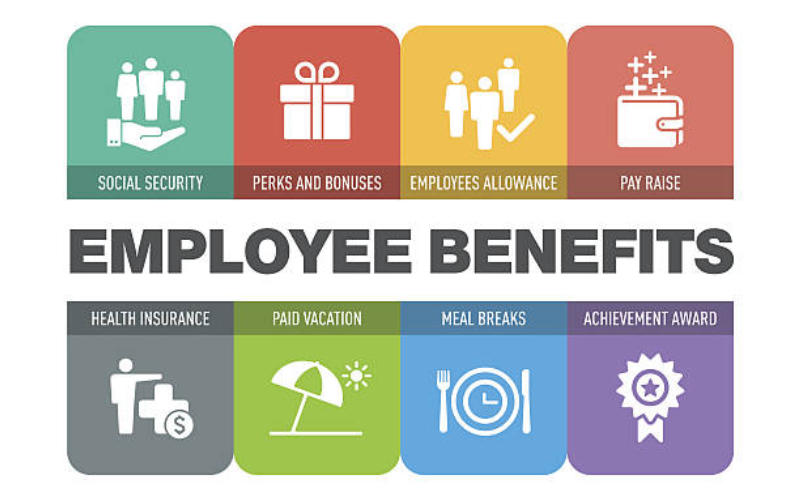Beyond Traditional: Unveiling the Future of Benefits with 6 Emerging Trends in Employee Perks
The landscape of employee benefits is rapidly evolving, shaped by the changing expectations and preferences of the modern workforce. As a Human Resource consultant, staying ahead of the curve is essential to attract and retain top talent. In this article, we’ll delve into six emerging trends in employee perks that are redefining the future of benefits, offering insights into the innovative strategies that can elevate your organization’s appeal in the competitive talent market.
1 Well-Being Initiatives Take Center Stage:
Why it Matters:
Employee well-being is no longer just a buzzword; it’s a strategic imperative. The future of benefits revolves around holistic well-being initiatives that address physical, mental, and emotional health.
Emerging Trends:
– Mental Health Support: Offer comprehensive mental health programs, including counseling services, stress management workshops, and mindfulness training.
– Flexible Work Arrangements: Embrace flexible work schedules and remote options to promote a healthy work-life balance, reducing stress and enhancing overall well-being.
2 Financial Wellness Programs Gain Momentum:
Why it Matters:
Financial stress can significantly impact employee performance and satisfaction. Employers are increasingly recognizing the importance of financial wellness in their benefits packages.
Emerging Trends:
– Student Loan Assistance: Provide support for employees burdened by student loans through repayment assistance programs or refinancing options.
– Financial Education Workshops: Offer workshops on budgeting, investing, and other financial literacy topics to empower employees to make informed financial decisions.
3 Personalized Benefits For Diverse Needs:
Why it Matters:
Employees have diverse needs and preferences. Personalizing benefits allows organizations to cater to the unique requirements of their workforce.
Emerging Trends:
– Customizable Benefit Packages: Introduce flexible benefit plans that allow employees to choose benefits that align with their individual needs, such as health insurance options or wellness incentives.
– Family-Friendly Benefits: Include family planning support, parental leave, and childcare assistance to accommodate the diverse family structures within the workforce.
4 Technology-Driven Employee Experience:
Why it Matters:
In the digital age, employees expect seamless and user-friendly experiences. Technology-driven benefits enhance convenience and accessibility.
Emerging Trends:
– Digital Health Platforms: Implement apps and platforms that provide health and wellness resources, telehealth services, and personalized fitness plans.
– Employee Assistance Programs (EAPs) Apps: Make mental health support easily accessible through mobile apps, ensuring employees can access counseling and resources at their convenience.
5 Focus On Diversity, Equity, And Inclusion (Dei) Benefits:
Why it Matters:
DEI initiatives are integral to creating an inclusive workplace. Benefits that promote diversity and equality contribute to a positive organizational culture.
Emerging Trends:
– Inclusive Family Benefits: Extend family-related benefits to all types of families, including same-sex partners, fostering an inclusive environment.
– Anti-Bias Training: Provide anti-bias training programs and resources to promote a culture of respect and equality within the organization.
6 Environmental And Social Responsibility Perks:
Why it Matters:
Modern employees are increasingly conscious of environmental and social issues. Organizations are incorporating benefits that align with employees’ values.
Emerging Trends:
– Eco-Friendly Initiatives: Offer perks such as commuter benefits, eco-friendly office spaces, and incentives for sustainable commuting options.
– Volunteer Time Off (VTO): Provide paid time off for employees to engage in volunteer work, supporting social and community causes.
Measuring Success: Employee Satisfaction Surveys And Retention Rates
To gauge the success of emerging benefit trends, HR professionals can conduct regular employee satisfaction surveys, specifically focusing on the effectiveness and popularity of the introduced perks. Additionally, monitoring retention rates can provide insights into the impact of these benefits on employee engagement and loyalty.
Conclusion: Pioneering The Future Of Employee Benefits
In conclusion, the future of employee benefits is dynamic and forward-thinking. As a Human Resource consultant, embracing these emerging trends can position your organization as a leader in talent attraction and retention. By prioritizing well-being, incorporating financial wellness programs, personalizing benefits, leveraging technology, promoting diversity and inclusion, and embracing environmental and social responsibility, HR professionals can pioneer a future where employee perks go beyond traditional offerings. Remember, the key is to continually assess the evolving needs of your workforce and adapt your benefits strategy to create a workplace where employees feel valued, supported, and motivated to contribute to the success of the organization in meaningful ways.


